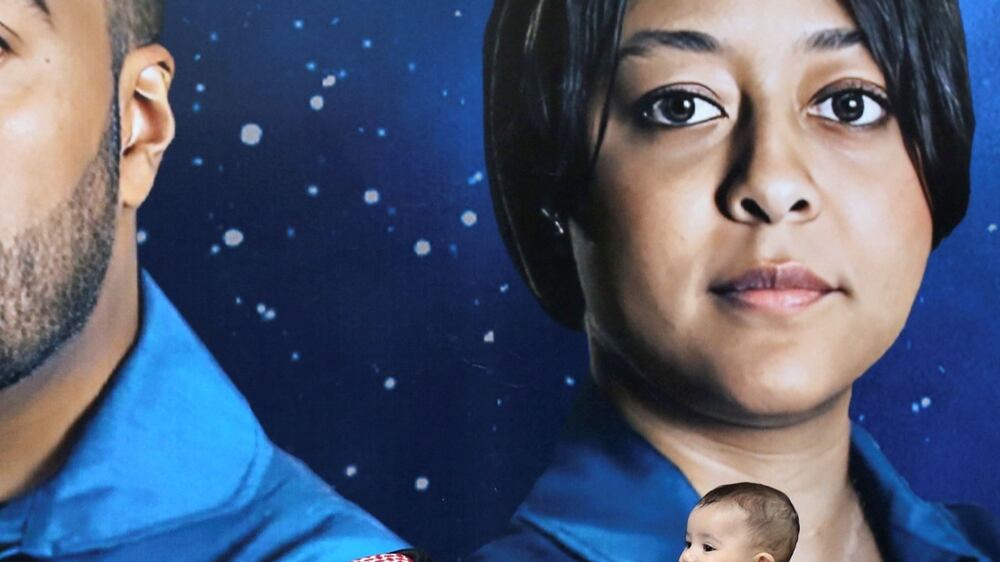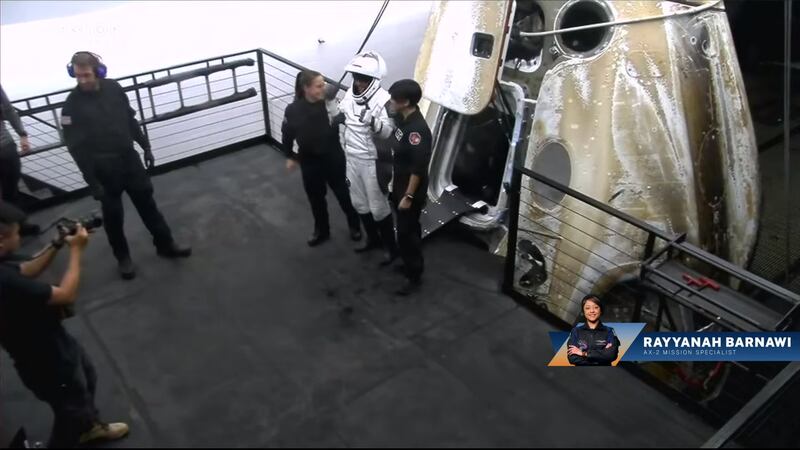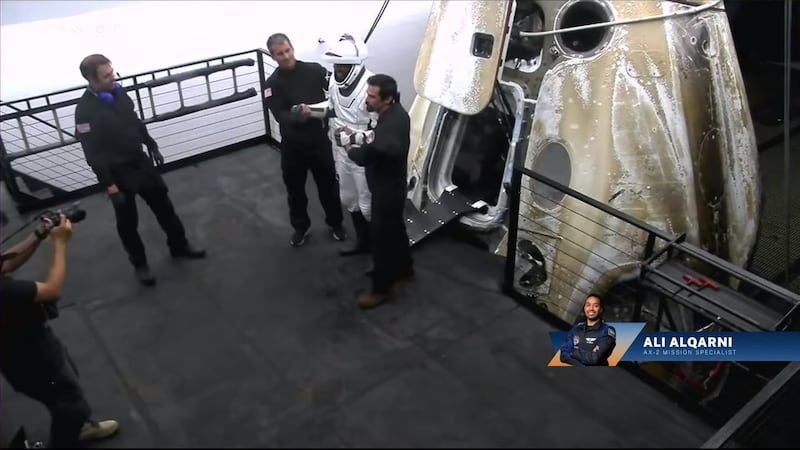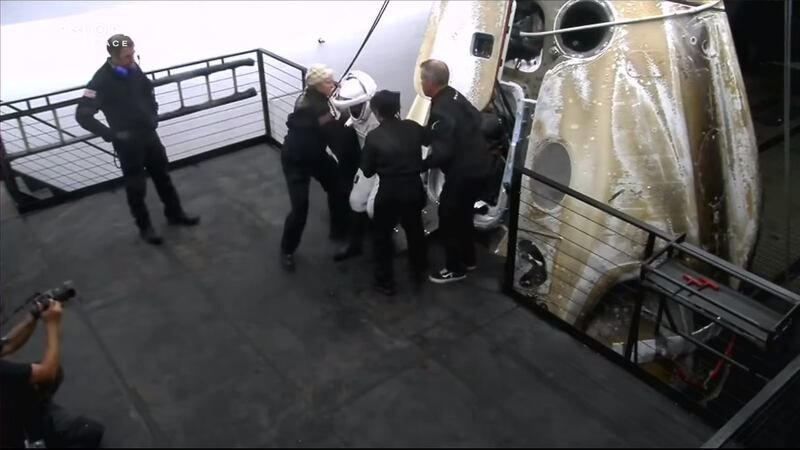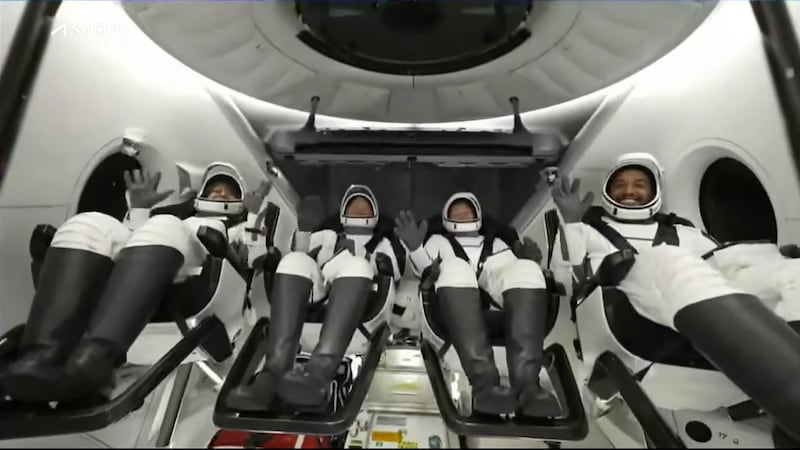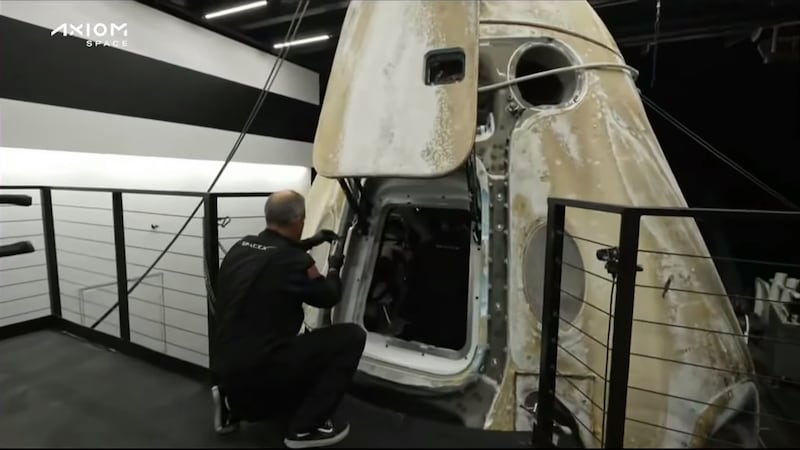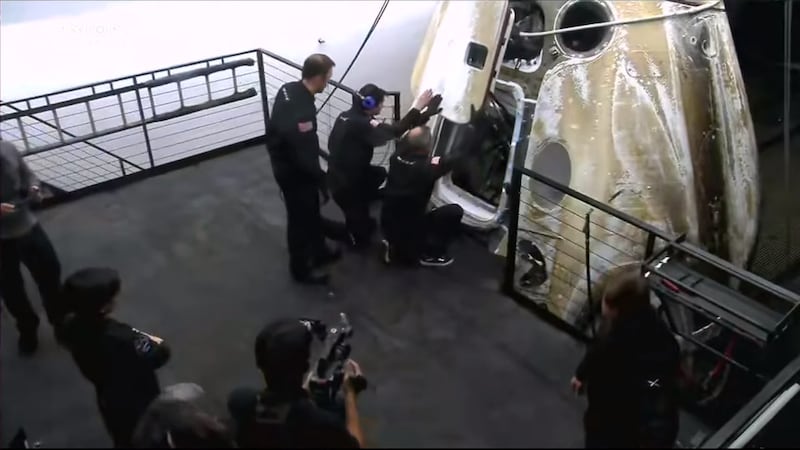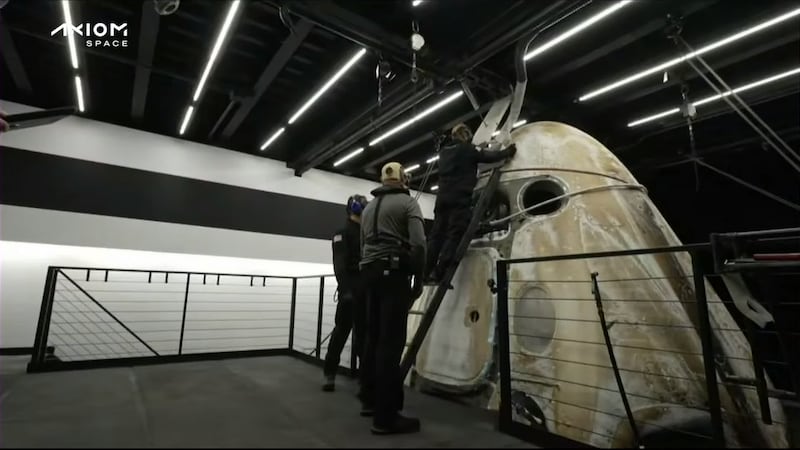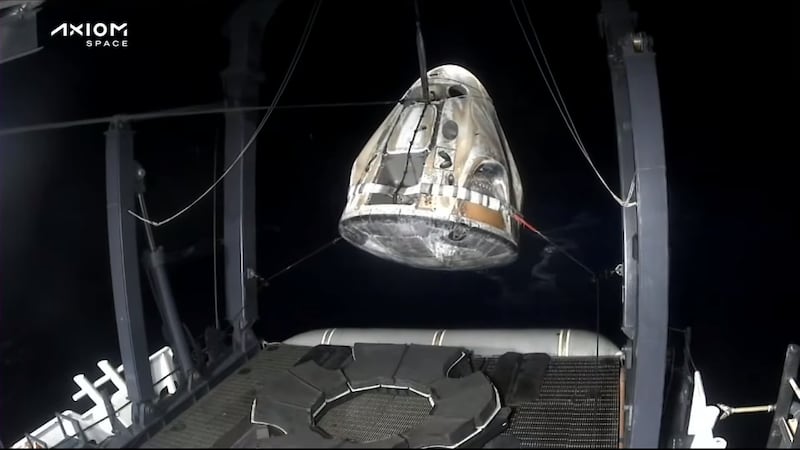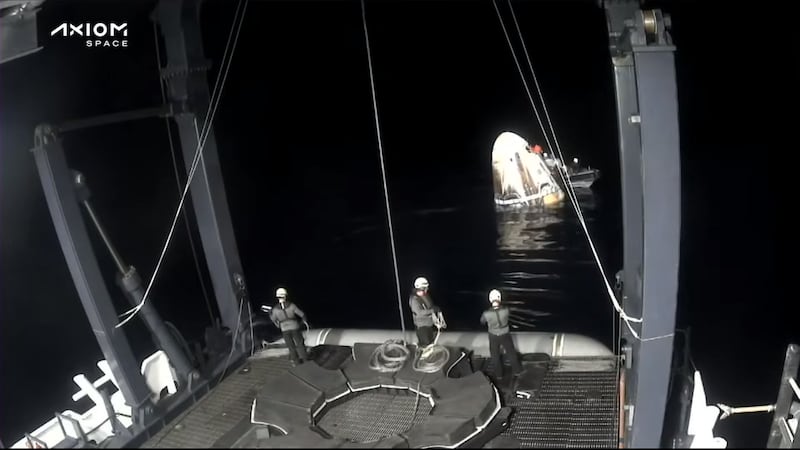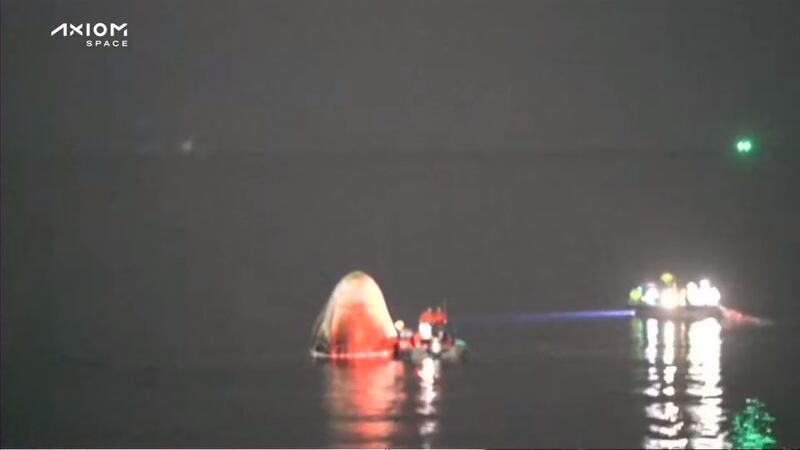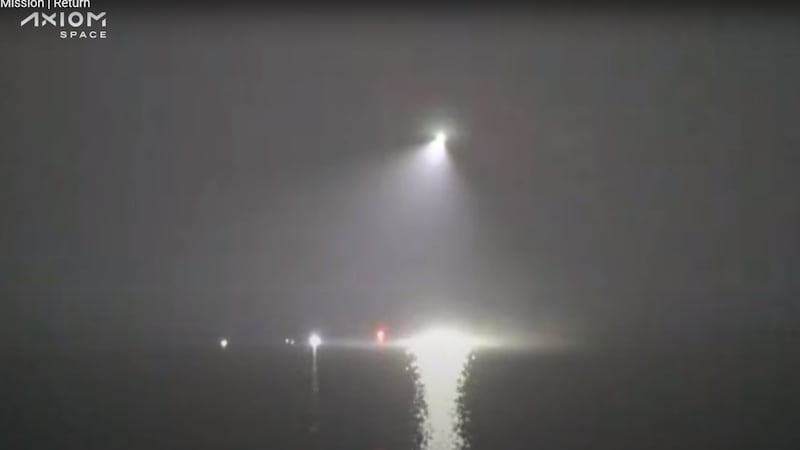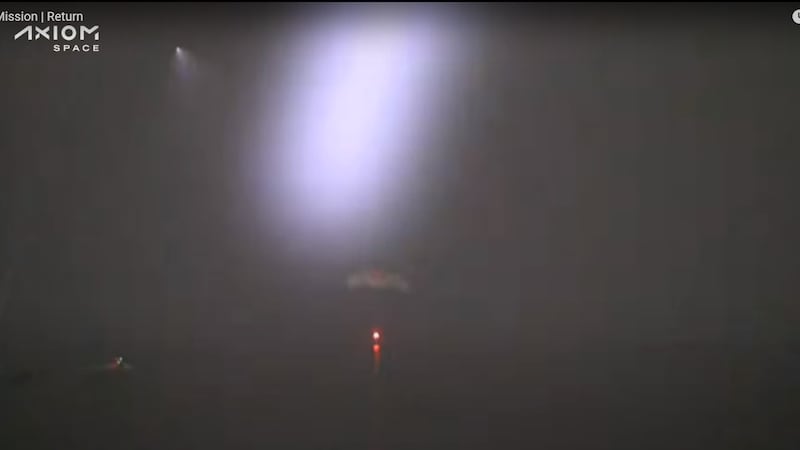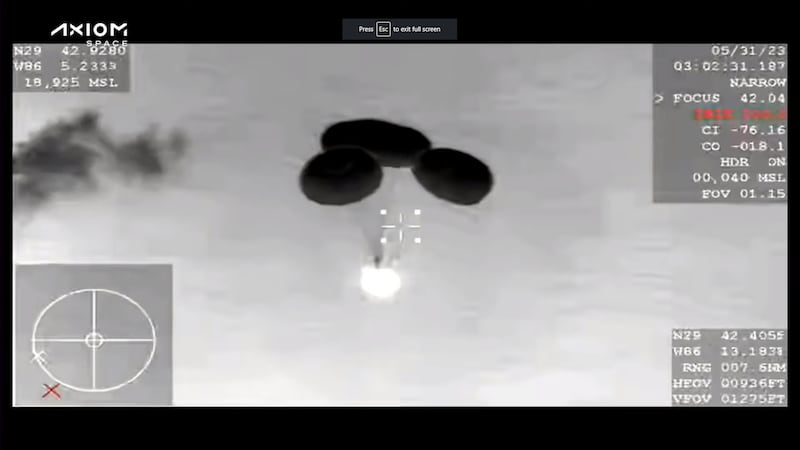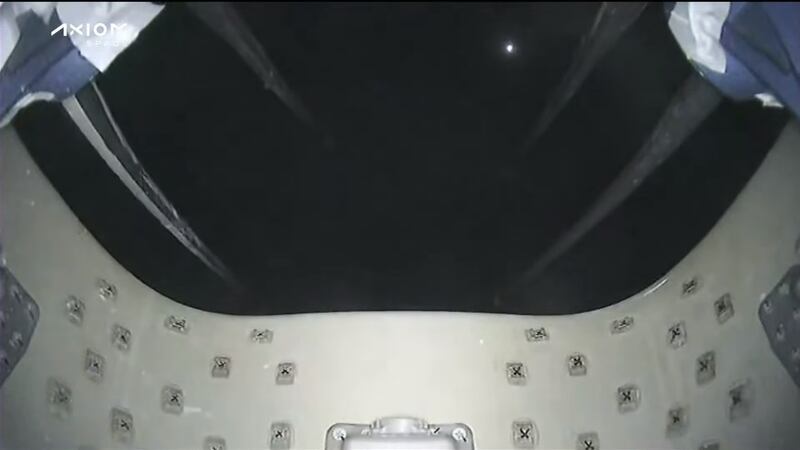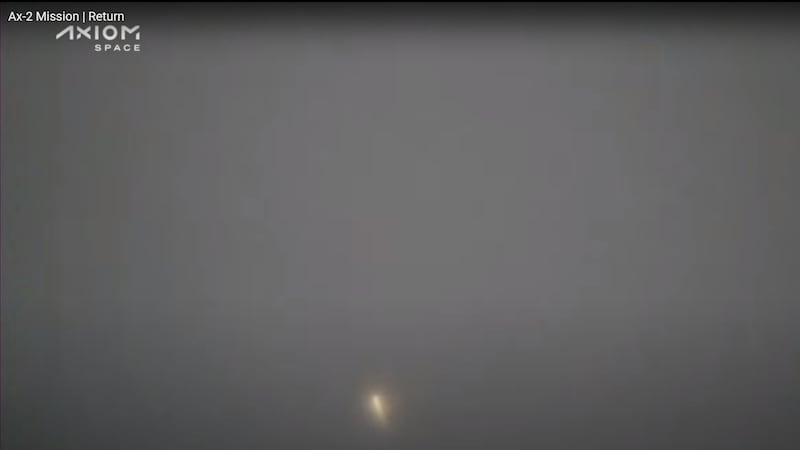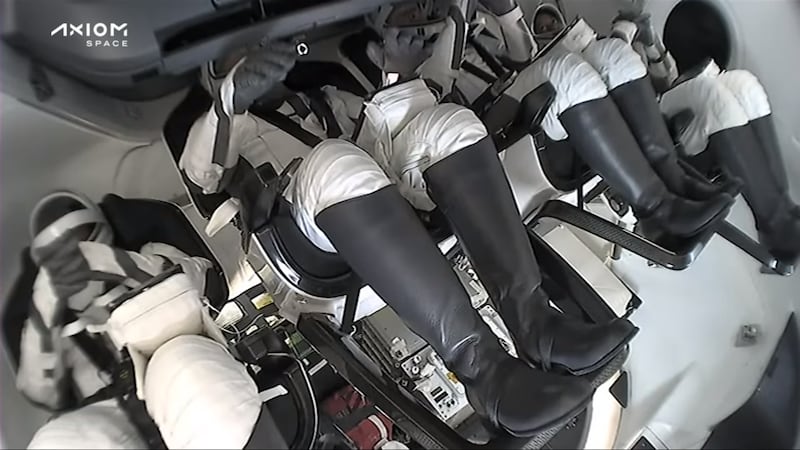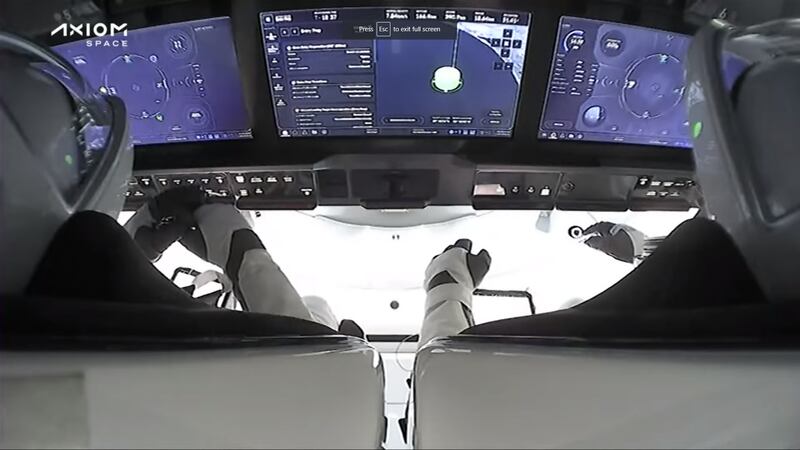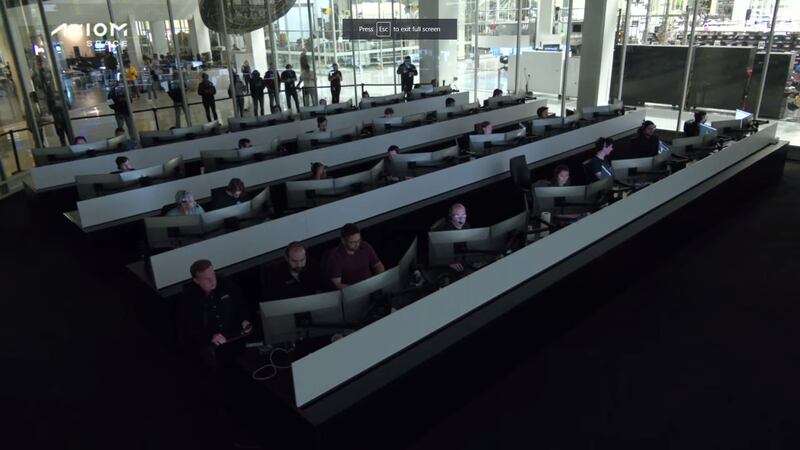It has been little more than a week since two Saudi astronauts returned to Earth from their historic trip to space, but they are eager to blast off into orbit again – this time for long-duration missions.
Rayyanah Barnawi, 33, and Ali Al Qarni, 31, spoke to The National on Friday about their eight-day stay on the International Space Station, and what they hope will be next in line for the kingdom's space programme.
The trip helped Saudi Arabia achieve notable firsts in space – with Ms Barnawi becoming the first Arab woman to go on a space mission and the pair becoming the first Saudi citizens to reach the ISS.
Speaking remotely from Houston, the astronauts said they would “absolutely” want to go on long-term space missions next.
“In a heartbeat,” said Ms Barnawi, who is a research scientist.
Mr Al Qarni said he wants to beat the record held by his crewmate and former Nasa astronaut Peggy Whitson. She has amassed 675 days in space, making Ms Whitson the most experienced US astronaut.
“I would love to go. It's a goal of mine to serve humanity in longer duration missions. I've said it to Peggy – I want to beat her record, just to be clear,” said Mr Al Qarni.
Non-ISS partner countries like Saudi Arabia would benefit from private space stations that companies such as Axiom Space – the Houston company that helped arrange this trip – are trying to build, as it would allow them to purchase missions in low-Earth orbit regularly.
'Blasting off into space was memorable'

A SpaceX Falcon 9 rocket carried the two Saudi astronauts and two American colleagues to space on May 22.
Ms Barnawi said the lift-off was the most memorable experience for her in the mission.
“The moment for me was the lift-off and being able to leave Earth. Being able to feel how the rocket trembles and lifts you up, and then feeling the build-up of all the g-forces as you go forward towards orbit.
“To me, that was the most memorable moment of the launch.”
Ms Barnawi said working and living aboard the orbiting outpost was also a “spectacular feeling”.
Astronauts are trained in replicas of the ISS before going on a flight, so Ms Barnawi said it “felt like home”.
They joined UAE's Sultan Al Neyadi aboard the station, who is there on a six-month mission as part of Nasa/SpaceX Crew-6.
“We've also had the privilege to meet Crew-6 before going to the International Space Station, so when we got there, it felt like we're visiting a family,” said Ms Barnawi.
“And we're visiting a home that we've also 'seen'. So, you could feel the warmth and the welcoming of the crew that was on board the station.”
Mr Al Qarni said every stage of the mission has been memorable for him, but he also particularly enjoyed the ride on a Falcon 9 rocket.
The fighter pilot said the experience was different to flying fighter jets.
“I was trying to compare the feeling of lift-off to when I fly my fighter jet. It is totally different,” he said.
“The amount of power and g-forces that you feel, it's different and makes it unique by itself.”
Making artificial rain in space

The Saudi astronauts only had eight days in space, but their schedule was jam-packed with research work assigned to them by researchers in their homeland.
Mr Al Qarni conducted an experiment involving cloud seeding, in which he mixed salt crystals and moist air in a reaction chamber to see if water droplets would form.
The research work was to help establish whether cloud seeding techniques could be improved on Earth and if astronauts could produce water on the Moon and Mars.
“Being able to generate artificial rain on the surface of the Moon or Mars would be beneficial and instrumental for us, and that would help us actually live in there and make life a lot easier,” he said.
Ms Barnawi spent her time researching human immune cells and testing their inflammatory response to microgravity.
'Welcome to Earth'
The crew landed back to Earth on May 30, with a Dragon capsule that splashed down off the coast of Florida.
Ms Barnawi and Mr Al Qarni had to get used to gravity again, after spending days in weightlessness.
“The moment we stood up, after leaving the capsule, it felt really weird, because everyone was saying, 'welcome to Earth'. Hearing that sentence was overwhelming,” Ms Barnawi said.
She said she was excited to see her family members again, who see had not seen for about two months.
“It was hard for me to actually keep my tears in,” she said.
'Arab region is excited'
Ms Barnawi and Mr Al Qarni were the first Saudi citizens to go to space in nearly 40 years. Prince Sultan bin Salman travelled in Nasa's Space Shuttle for a week-long mission in 1985.
They are also the first astronauts under the kingdom's new long-term astronaut programme, with the Saudi Space Commission hoping to eventually send citizens on longer duration missions.
Mr Al Qarni said the response from the Arab world has been huge.
“The region is excited,” he said.
“We were three Arabs aboard the ISS. I think it's historic, we made history, and I cannot wait for many others to join.
“We keep receiving gifts and emails from people across the region. They're telling us how excited and proud they are.
“Now, they can become an astronaut and follow our lead and go to space.”
